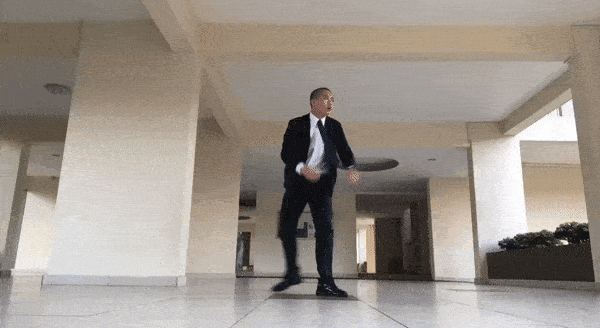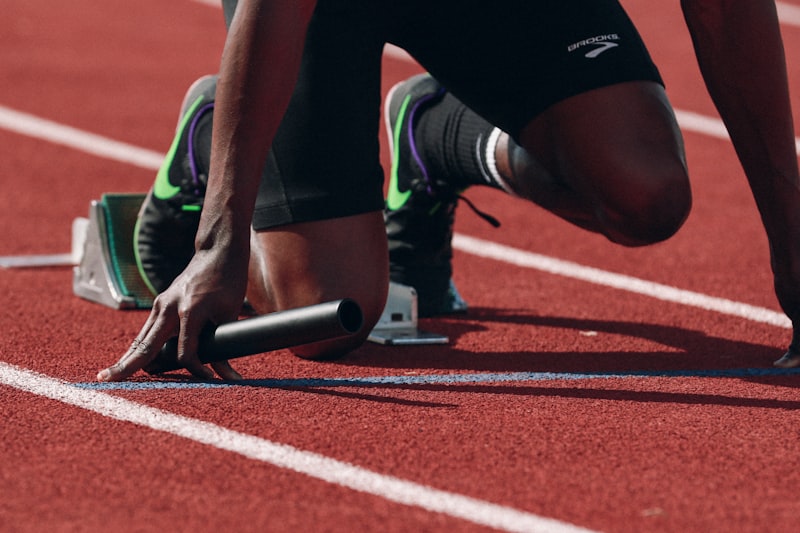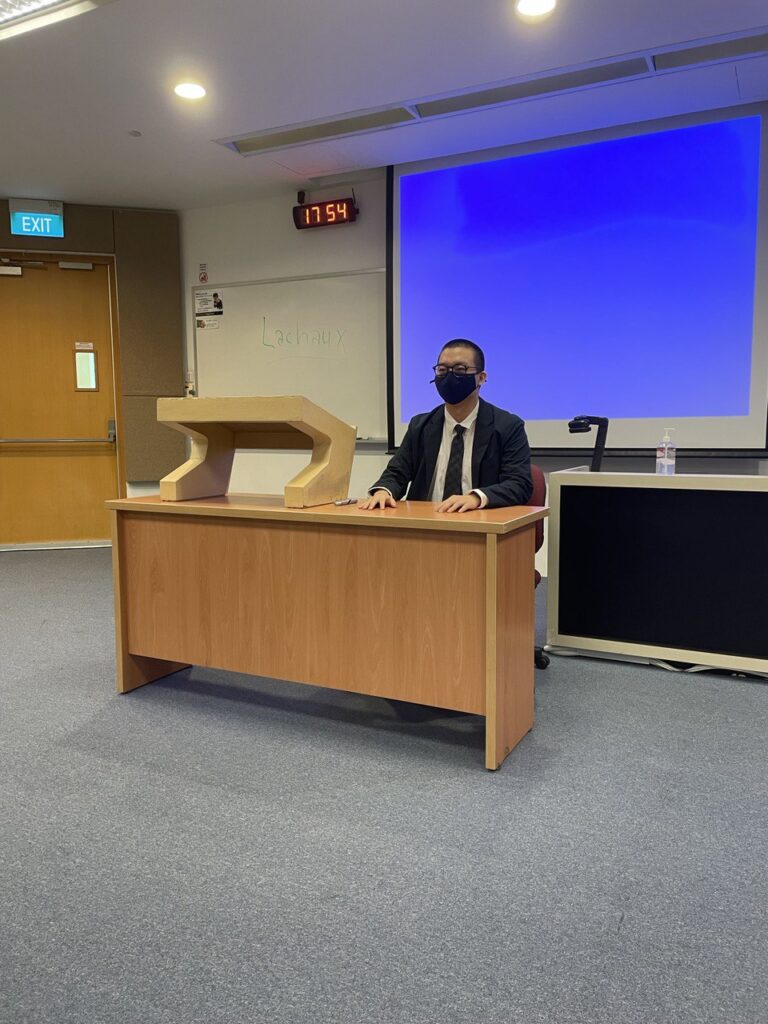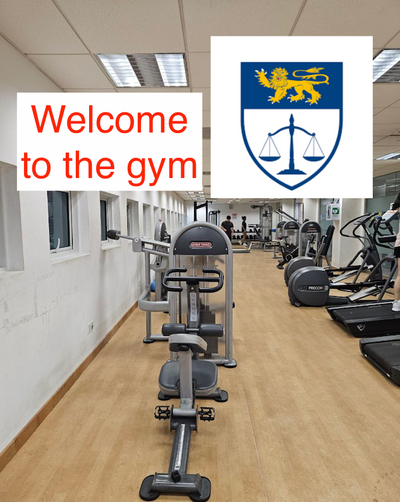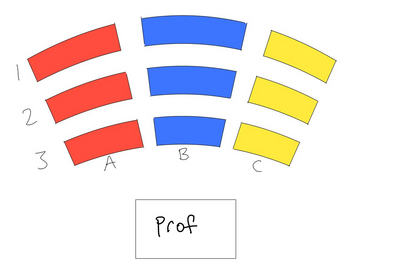Hey guys, it’s Shou Pin again: the Year 4 student who still has the time to write on Justified. I can’t say confidently that I’m speaking for the rest of my classmates but I’m utterly terrified of the prospect of graduating and being thrust into the big scary world of practice! How sure can anyone be that their years of hitting the books and academic success – relatively speaking – will translate to even the barest level of competence in real life? Will I get a TC before I graduate? Who knows?
You know what they say: pray for Serenity to accept the things I cannot change, Courage to change the things I can, and Wisdom to know the difference. If your mind isn’t up to the task, you can always train your body! Here are three vital exercises you can do to get ready for life as a high-flying litigator!
To enter the courtroom with confidence and poise!
As first impressions are most important, a top litigator has to really nail the entrance. Of course, looking drop-dead gorgeous or wearing a thousand-dollar suit will go a long way, but true style comes from how your carry yourself. Confidence! Poise! Charisma! POSTURE!

To be the absolute best at bowing when you enter the court, what better exercise than a back-hamstring blaster: the GOOD MORNING! The exercise’s name sounds a little silly, but it’s a real killer. Basically, you hold a weight behind your neck and shoulders and bow – but don’t go too low because you’ll hurt yourself. Just enough to feel a VERY SLIGHT stretch and then you straighten yourself again. Don’t lock your knees so you can bend and stretch a little more because your hamstrings will snap if you put too much weight and restrict your knees.
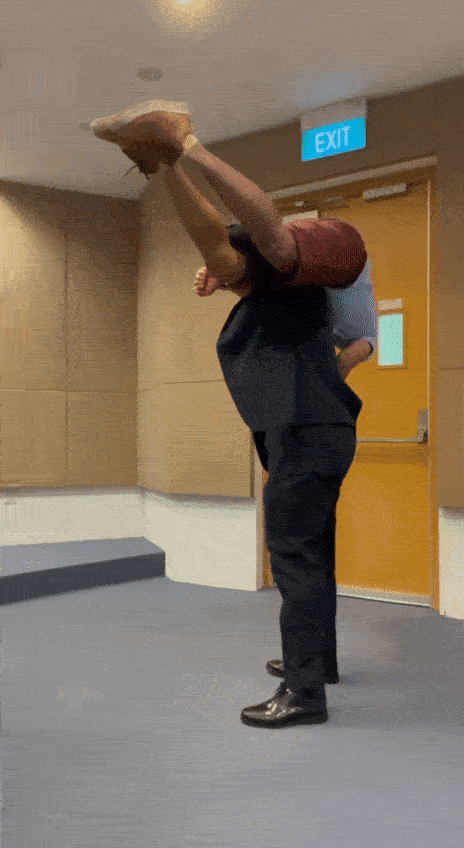
Also, this isn’t an exercise you want to go heavy with. I just used the fireman carry version because Rahul was in class with me and I didn’t want to have to use the weights in the gym.

To strenuously raise objections and leave an impression on the judge!
I’ve heard that lawyering is 1% knowing the law and 99% looking like you know the law. Therefore, you’ve got to look completely sure and resolute when your hand shoots up. Do you know what that requires? Procedural knowledge? Nonsense – good, strong shoulders!
You could do dumbbell raises or military presses (pushing weights over your head) but you could also do HANDSTAND PRESSES which uses your body for the weight. Just stand up next to a wall and either tiptoe up or kick off the ground and rest your heels on the wall, then carefully lower yourself and push off.
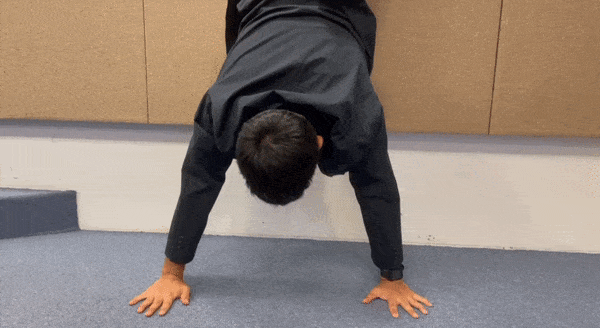
It’s pretty difficult – I couldn’t do it without falling over because I’ve no sense of balance – so I’ve got Rahul here to demonstrate it. If you can’t do it properly, don’t force yourself because you could hurt your shoulders. Just try to hold the handstand for as long as you can or lower yourself only as far as you’re comfortable.
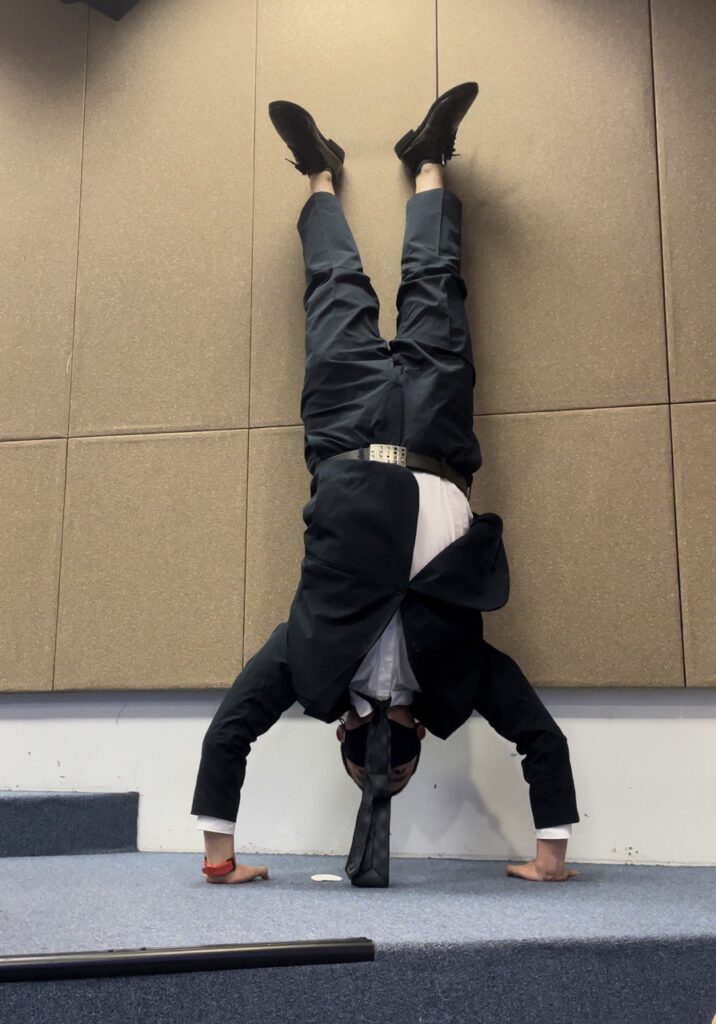
To improve your ability to bear the onerous burden of proof!
Litigation is pretty cool most of the time. Whenever you don’t have to do boring and tedious things like PROVE FACTS. Training your speed and power probably won’t help you wrangle up the evidence to prove relevant facts, but this UPHILL RESISTED RUNNING drill can help build up your endurance so you can tough it out!
Basically, you can buy a running parachute (which is very expensive), tie a rope around your waist and attach the other end to a heavy rubber tire, or you could have a friend provide the resistance by pulling back on your waist like a chariot rider.

In this clip, we’re using a karate belt since it’s nice and sturdy but you can use any tough rope or a thick resistance band.
To make it to court in time when you accidentally go to the wrong court!
This actually happened to me during my Orientation because I went to the wrong court, but I managed to take a taxi to the correct court in time. I’ve since wondered if I could have made the journey on foot. It’s not an entirely inconceivable situation, after all.
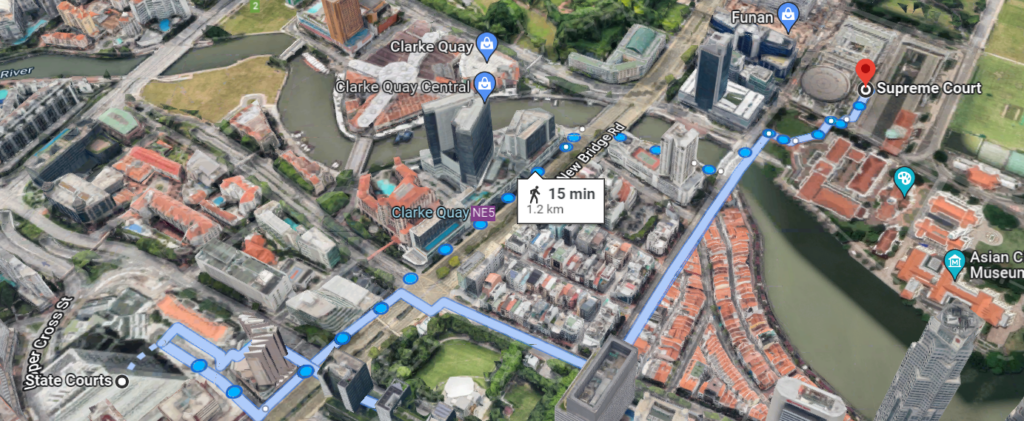
There are three vital conditions:
- First, the distance is 1.6km. The State Courts and Supreme Court are only 1.2km apart in reality, but you’ll have to run around other pedestrians, backtrack or run up overhead bridges, so I’ve added some distance to make it tougher.
- Second, there’s got to a lot of ups and downs to simulate those overhead bridges. Therefore, I’ve decided to run two rounds around the faculty, since the route adds up to about 1.6km and incorporates the uphill sections.
- Third, you’ve got to carry some weight as no self-respecting lawyer would go to court empty-handed and leave behind their laptop, case files and other documents. I was going to use a briefcase but I don’t have one, so I’ve used this messenger bag. I’ve put in my laptop, Yoshifumi Tanaka’s textbook on Law of the Sea and the International Refugee Law textbook by Goodwin-Gill and McAdam – it’s quite heavy!
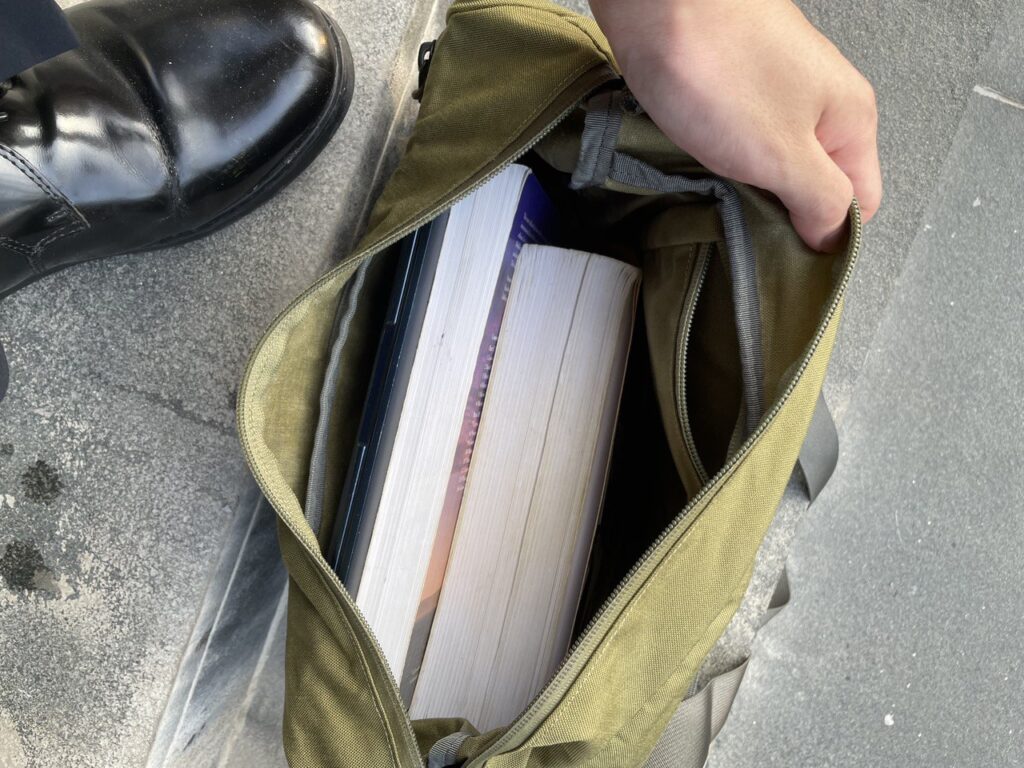
Well, I tried and failed miserably. This was the worst that I’ve felt in my entire existence. Don’t try this. Ever.

As you can see, I started off pretty strong.
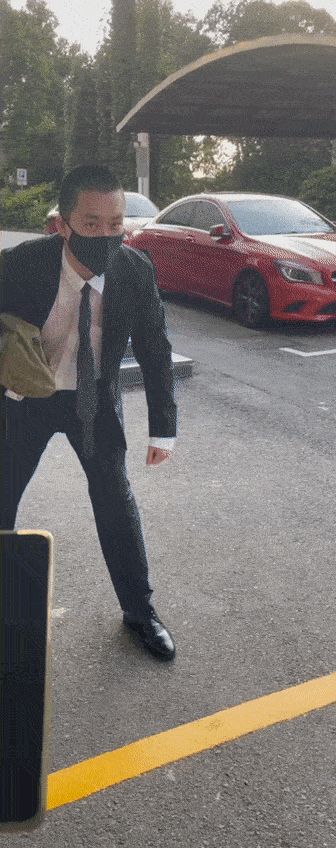
Unfortunately, I drastically underestimated how the weight of the bag and the stupid flapping jacket hindered my movements. It wasn’t long before I had to take walking breaks.
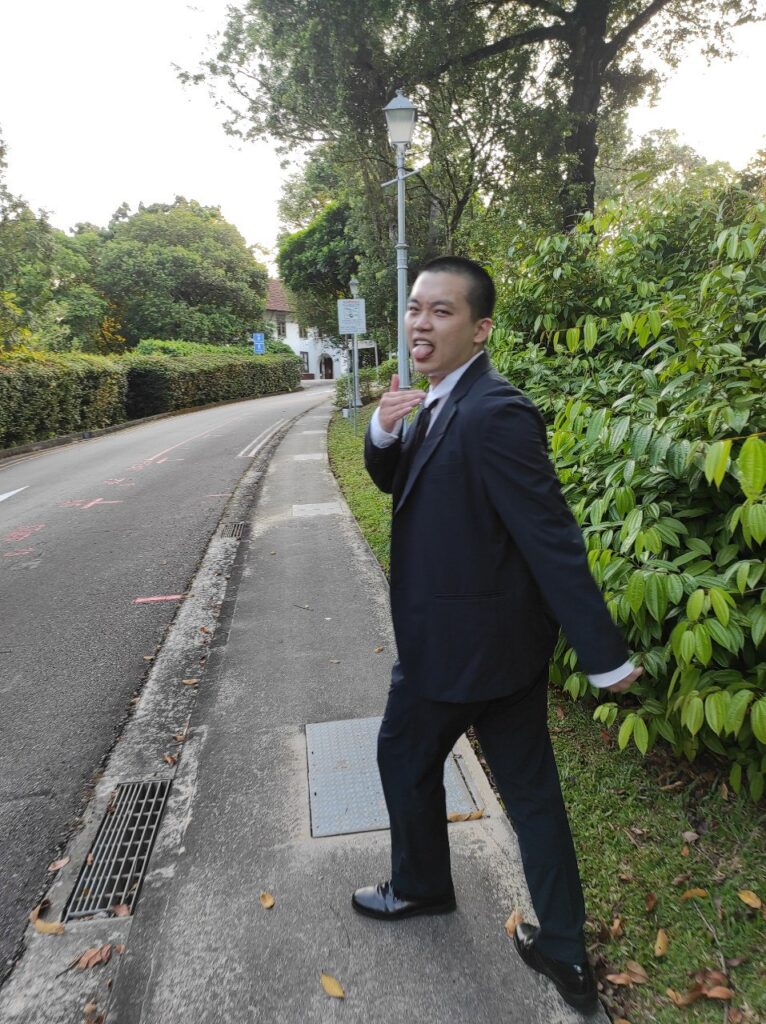
I tried to keep as true to the test by not using the bag’s sling and keeping my jacket on, but it was ridiculously hot so I ended up cheating and slinging the bag and taking off the jacket. I would rather wear the stinky and suffocating biohazard suit they used for biological threats than a floppy suit.
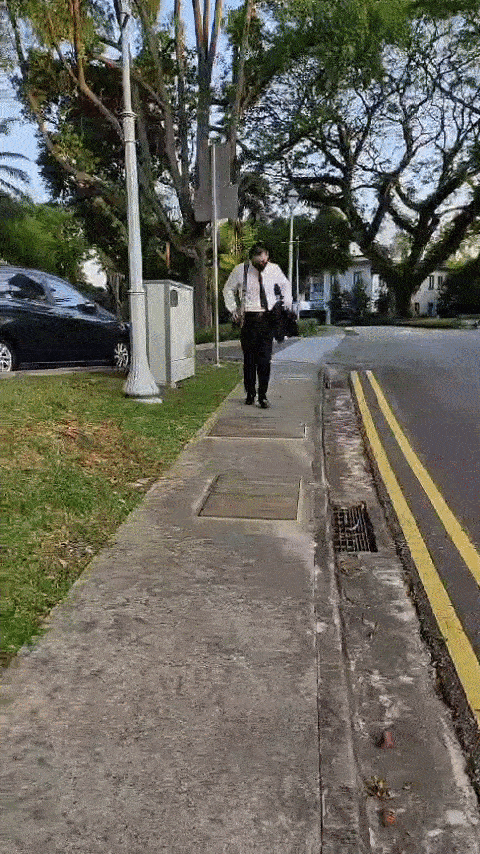
It did not go well.
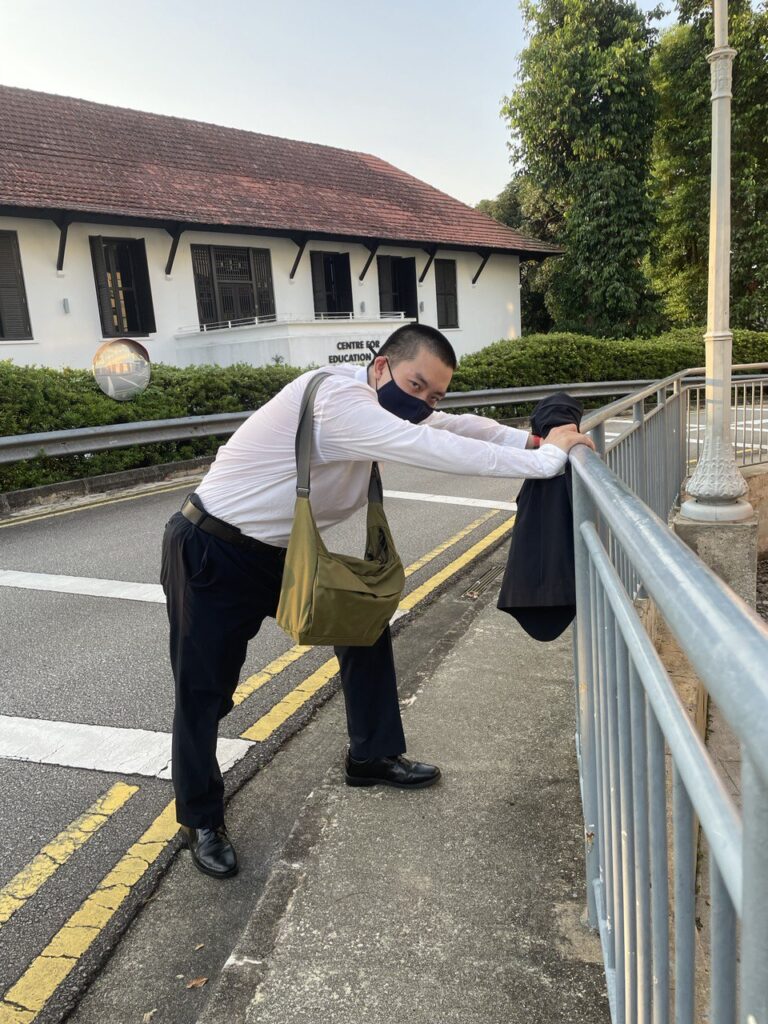
When all was said and done, this is what I looked like:

Conclusion:
Obviously, I don’t actually think that doing these will improve your chances of having a successful career, but I wanted to write something with the gimmick of doing law-themed exercises while dressed in formal attire. I hope you were amused by this post because I felt completely ridiculous. I hope the rest of your semester goes well. See you around!

